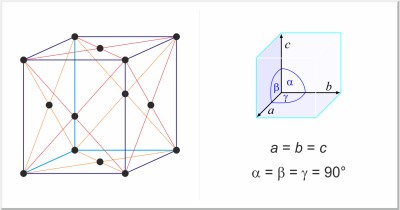Ac
Actinium
ACTINIUM
TRANSITION ELEMENT: SCANDIUM GROUP
| Atomic number: | 89 |
| Group numbers: | 3 |
| Period: | 7 |
| Electronic configuration: | [Rn] 6d1 7s2 |
| Formal oxidation number: | +3 |
| Electronegativities: | 1.1 |
| Atomic radius / pm: | 188 |
| Relative atomic mass: | - |
Actinium was discovered by André-Louis Debierne (FR) in 1899. The origin of the name comes from the Greek word aktinos meaning ray. It is a heavy, silvery-white, very radioactive metal that reacts with water and glows in the dark. Actinium is extremely rare, found in all uranium ores. It's usually obtained by treating radium with neutrons in a reactor.
| Density / g dm-3: | 10060 | (calc.) |
| Molar volume / cm3mol-1: | 22.56 | (calc.) |
| Electrical resistivity / µΩcm: | - | (20 °C) |
| Thermal conductivity / W m-1K-1: | 12 |
| Melting point / °C: | 1051 |
| Boiling point / °C: | 3198 |
| Heat of fusion / kJ mol-1: | - |
| Heat of vaporization / kJ mol-1: | - |
| Heat of atomization / kJ mol-1: | 406 |
| First ionization energy / kJ mol-1: | 498.83 |
| Second ionization energy / kJ mol-1: | 1167.48 |
| Third ionization energy / kJ mol-1: | - |
| in the atmosphere / ppm: | - |
| in the Earth's crust / ppm: | - |
| in the oceans / ppm: | - |
| Crystal structure: | face-centered cubic |
| Unit-cell dimensions / pm: | a=531.1 |
| Space group: | Fm3m |

| Isotope | Relative atomic mass | Mass percent (%) |
|---|---|---|
| 225Ac | 225.023 23(3) | * |
| 227Ac | 227.027 75(2) | * |
| Balanced half-reaction | Eo / V | |
|---|---|---|
| 88 Radium | ← | 89 Actinium | → | 90 Thorium |
Citing this page:
Generalic, Eni. "Actinium." EniG. Periodic Table of the Elements. KTF-Split, 13 Feb. 2025. Web. {Date of access}. <https://www.periodni.com/ac.html>.
Articles and tables
- Periodic table
- Online calculators
- Scientific calculator for chemists
- Gas laws calculator
- Molar mass calculator
- Angle converter
- Roman numerals converter
- Number systems converter
- Preparation of solutions
- Labeling of chemical containers
- Oxidation numbers calculator
- ARS method
- Oxidation number change method
- Ion-electron method
- Gauss elimination method
- Memory game
- Find the pairs
- Articles and tables
- Chemistry
- List of abbreviations and acronyms
- Crystal systems and Bravais lattices
- GHS - Hazard pictograms
- NFPA 704 Hazard Diamond
- Fundamental physical constants
- Solubility product constants
- SI - International System of Units
- Composition of mixtures and solutions
- Stoichiometric calculations
- Chlorinity and salinity of seawater
- Rare earth elements (REE)
- Ecology
- Web design
- Chemistry dictionary
- Chemistry
- Downloads
- ≡ Menu
Copyright © 1998-2025 by Eni Generalic. All rights reserved. | Bibliography | Disclaimer
